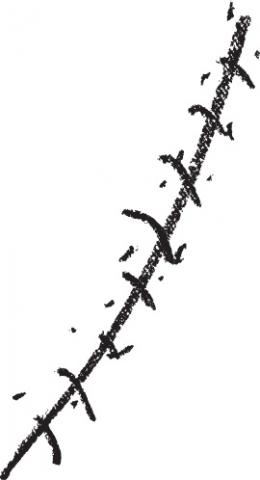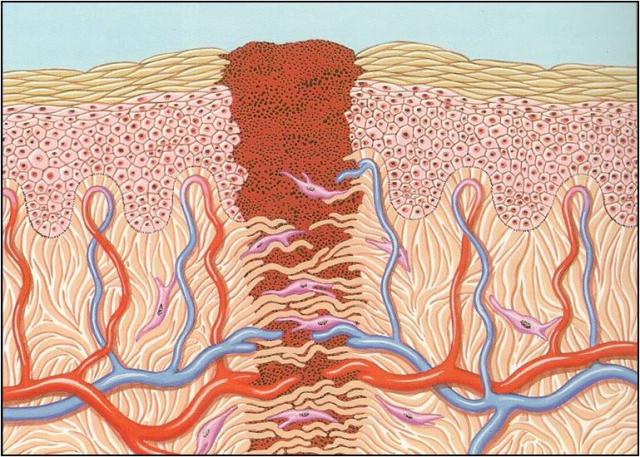"/>

What are Scars ?

This website has been possible due to an Educational grant provided by Sinclair Pharmaceuticals, providers of Kelo-Cote scar Gel. We would like to thank Sinclair Pharmaceuticals for thier generous support
Scars are formed by the over production of a naturally occurring chemical in the body called collagen. Collagen is a natural part of the healing process and essential to ensure that the wound heals properly. In the normal healing process, once the wound has healed, collagen stops being produced and the skin returns to normal. In some people, either due to genetic reasons, or because of the severity of the wound, collagen carries on being produced and this is what causes red raised scars.
It should be noted that everyone scars when they heal, but in the majority of people the scars disappear after a couple of weeks. If they do not, they are abnormal scars and need to be treated.

As can be seen from the picture above, the final part of the wound healing process is the would coming together and the skin on top of the wound regenerating so that the wound is completely healed. Unfortunately in humans, the skin does not regenerate in a controlled way. This means that the skin that results after wound healing tends to be different from the original skin.

The picture above shows the disorganised manner in which the skin grows back. After a period of time this does become as close to normal as can be, but in a certain amount of people this does not happen and due to the over production of collagen, scars from and have to be treated.
The main causes of scars are:
1- Genetic. Some people are just prone to scarring. This can be partly due to skin type (see below) but can be just realted to the fact that some peoples genetic make up, mean they produce too much collagen when they are healing.
2- Skin Type. Dark skins (Afro-Caribeean and Asian) tend to scar badly and are particularly susceptible to Keloids. People who burn easily in the skin also tend to scar badly.
3- Hormones. Some women develop scars when they are pregnant but not at any other time. Also Keloids, tend to occur during or just after puberty, implying that there is a hormonal link to scar formation
4 - Size of wound. The larger the wound the more likely you are to develop an abnormal scar. This is related to the time to heal (see below).
5- Time to heal. It has been proven that the longer the wound takes to heal, the more likely that you are to scar. The time to heal is dictated by the severity of the wound, wound infections, number of dressing changes and how deep the wound is.
The best form of treatment for scarring is prevention and careful management of the wound. Even with the best care possible some people will just scar and will need to treat the scars. If you have a history of scarring or you know someone in your close family that scars, you will need to treat early with therapy such as silicone gels to prevent scars forming